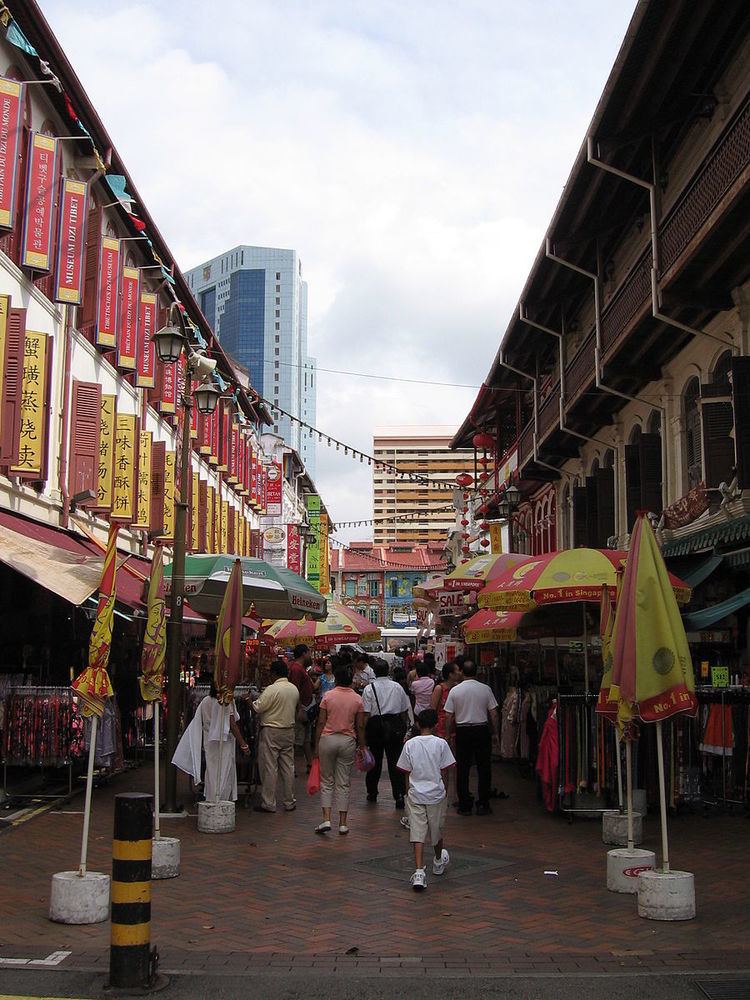 | ||
Traditional Chinese 1. 牛車水橫街2. 戲院橫街3. 丁加奴街 Simplified Chinese 1. 牛车水横街2. 戏院横街3. 丁加奴街 Literal meaning 1. Kreta Ayer's cross street2. theatre side street3. (Phonetic transcription) Hanyu Pinyin Jyutping 1. ngau che seui waang gaai2. hei jyun waang gaai3. ding ga nou gaai Hokkien POJ 1. gu chia chui wha koi | ||
Chinatown food and beverage kiosks at trengganu street
Trengganu Street (Chinese: 丁加奴街; pinyin: Dīngjiānú Jiē) is a street located in Chinatown within the Outram Planning Area in Singapore.
Contents
- Chinatown food and beverage kiosks at trengganu street
- Map of Trengganu St Singapore
- Singapore chinatown trengganu street
- Etymology and history
- References
Map of Trengganu St, Singapore
The road links Pagoda Street and Sago Street, and is intersected by Temple Street and Smith Street. A section of Trengganu Street from Pagoda Street to Smith Street was converted to a pedestrian mall in 1997, with the remaining section of the street and Sago Street also converted into a pedestrian mall in 2003 and now forms the heart of the tourist belt in Singapore's Chinatown.
Singapore chinatown trengganu street
Etymology and history
Trengganu Street takes its name from Terengganu, a sultanate and state on the northeastern side of present-day Peninsular Malaysia. The difference in spelling is attributed to the state's former name, "Trengganu", which was given to the street at the time the state was named as such.
Trengganu Street was described as "the Piccadilly of Chinese Singapore" in the past. In Hokkien, the street is called "the cross street of Kreta Ayer". Kreta Ayer is a reference to the Chinatown area and the crossing of streets refers to Smith Street and Sago Street. Later, the Chinese referred to Trengganu Street in Cantonese as "theatre side street", a reference to the well-known Chinese theatre, Hei Yuen Kai or Lai Chun Yuen, on Smith Street. The theatre started in the 1880s and was renovated in 1918. It staged popular Cantonese operas until 1927.
Hawkers used to sell a variety of wares, from cheap cooked food to household goods day and night on Trengganu Street in the past. In 1968, there were 1,200 hawker stalls operating daily in the central Chinatown area, with most of the stalls being found mainly along Trengganu Street, Sago Street and Banda Street.
Today, Trengganu Street has been converted into a pedestrian mall. Some of the shophouses are home to performing arts groups.
